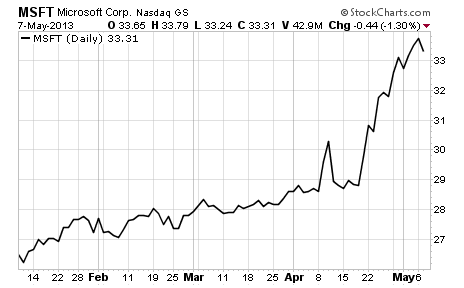The questions have been rolling in this week.
Last week I talked about how you can get paid to buy stocks. It’s simple, real and more importantly, a great source for driving income on a monthly basis.
There are so many advantages to using this simple strategy to buy stocks you want to own. Again, it’s a safe and reliable way to bring in income, but some investors simply use the strategy to lower the cost basis of their stock. Either way, it’s a strategy that every investor should incorporate in their quest to grow wealth.
So why aren’t more investors selling puts?
Simply put: most “experts” in the financial media think this kind of investment is too risky or complicated for the average investor. And frankly, there’s no money in it. Once you learn how to use this type of investment for yourself, you begin to see the whole world of finance differently. Instead of “paying” people to invest your money, you learn to get paid to invest.
The first key to selling puts safely and profitably is knowing the real risks in owning a company’s shares. We need to assure ourselves the companies we sell puts on are fundamentally sound.
For instance, take Microsoft.
It’s a company that we feel comfortable owning for the long haul mostly due to its unwavering quest to please shareholders. The company continually buys back stock and pays a healthy dividend of 3.1%.
The stock is currently trading for $33.31- a 10-year high.

In my opinion, the price is a little inflated. So I prefer to pay $31.
Remember when I said we want to get paid to be investors? Well, given our desire to own Microsoft at $31 – we can get paid. Think about that: we can get PAID to agree to buy a stock at a lower price that we prefer.
I don’t want to get into the details in this short column, but we can sell one put contract that gives us the ability to buy 100 shares of Microsoft at $31 a share – and collect an immediate $40.
And no matter what happens, we get to keep that $40. If Microsoft stays above $31 – the $40 we collected is ours.
But for the sake of understanding, we should examine the alternative – Microsoft closing below $31 by option expiration.
In that case we’d keep the $40 and be forced to buy Microsoft stock at $31 per share.
In this case, we’d actually own the stock for $30.60 per share – that’s the $31 strike price minus the $0.40 premium. That 9.4% less than Microsoft’s current market price.
Here’s that math:
Initial income from sold put premium – $40.
Purchase 100 shares of Microsoft at $31 – $3,100
Initial outlay: $3,060
The important thing to remember is that if the stock trades below $31 by option expiration, you become a shareholder just like everyone else … but at a discount.
Plus you’d get the dividend going forward of at least $92 per 100 shares, as each share pays a 92-cent annual dividend.
One way to think about it is that you’d receive $132 on a $3,100 investment. This works out to 4.3% on your money.
To me, this safe 4.3% return is superb given the current yields on bonds and other safe investments … and the likelihood of Microsoft raising dividends going forward.
One other thing to mention … had we been put Microsoft stock, I probably would have recommended selling a set of calls against our new stock position. This would boost the immediate income to the trade … but let’s not get too far ahead as I want to save this for next week.
I had to skip over some important details due to the length of this daily letter. But, if you are interested in hearing more, click here for full details.
Kindest,
Andy Crowder
Editor’s Note: If you would like to learn more about options and how you can generate steady income month in and month out… then consider taking a free, 30-day trial to our real money alert service, Options Advantage. You’ll discover exactly how our resident options expert, Andy Crowder, is using high probability trades to steadily grow a $25,000 real money portfolio. Every trade is executed for real… and readers are alerted instantly, so they can invest right alongside Andy. Click here to try Options Advantage, free.
 Facebook
Facebook
 Twitter
Twitter